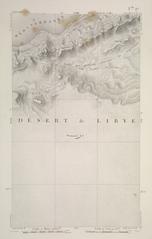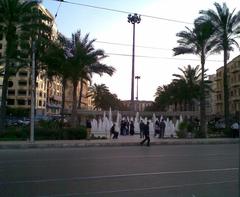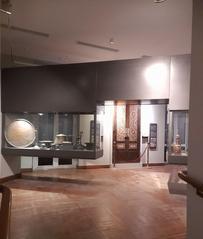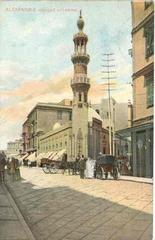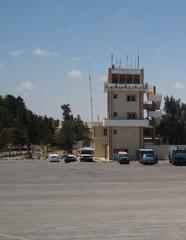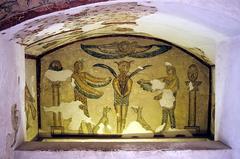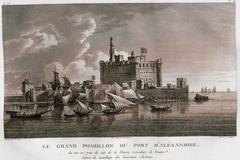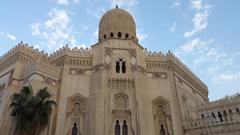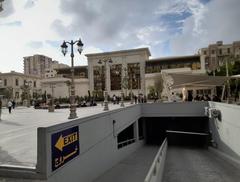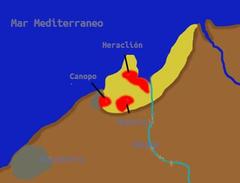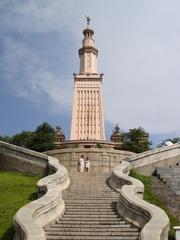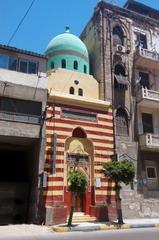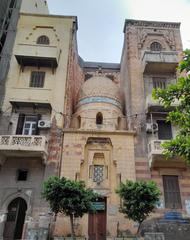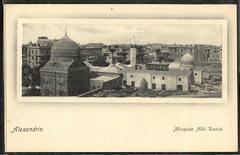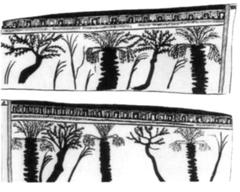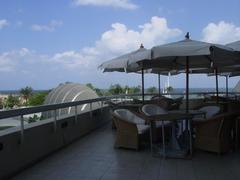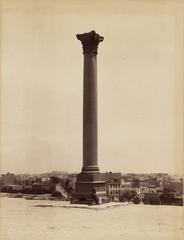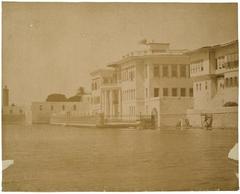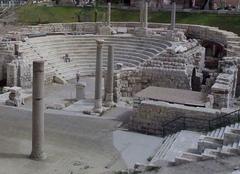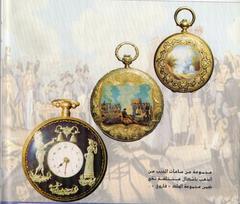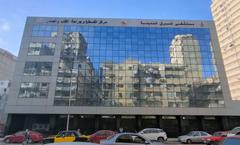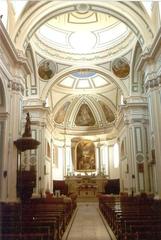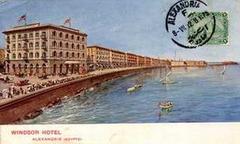
Comprehensive Guide to Visiting Alexandria, Alexandria Governorate, Egypt
Date: 14/08/2024
A Captivating Introduction
Imagine stepping into a city where history is not just a subject but a living, breathing entity. Welcome to Alexandria, Egypt—a place where Alexander the Great’s grand visions still echo through its ancient streets and modern marvels. Founded in 331 BCE, Alexandria quickly became a bustling hub of commerce and culture, boasting iconic landmarks like the Great Library and the Pharos Lighthouse, one of the Seven Wonders of the Ancient World (Britannica). Picture yourself wandering through a city that has been a melting pot for philosophers, scholars, and traders from all corners of the ancient world. Alexandria’s rich tapestry of history is woven with tales of Hellenistic grandeur, Roman splendor, and Islamic artistry, making it a treasure trove for any curious traveler. But Alexandria is not just about its glorious past; it’s a dynamic, modern city teeming with life, from bustling markets to serene coastal promenades. Whether you’re a history buff, a culture enthusiast, or just someone looking to soak in the Mediterranean vibes, Alexandria promises an unforgettable journey. So, ready your senses and prepare to explore a city where every corner has a story to tell, and every story is a gateway to another time (History Hit).
Table of Contents
Historical Background of Alexandria, Alexandria Governorate, Egypt
Foundation and Early History
Picture this: It’s 331 BCE, and Alexander the Great has just founded a city that’s about to change the world. Welcome to Alexandria, a bustling maritime hub on the Mediterranean coast, perfectly placed at the western edge of the Nile Delta. Ideal for trade, Alexander envisioned it as the capital of his new Egyptian dominion and a naval stronghold. Imagine the ancient settlement of Rhakotis, dating back to 1500 BCE, coming alive with the promise of new beginnings. The abundance of water from Lake Maryūṭ and the safe anchorage provided by the island of Pharos made this the perfect spot for his grand plan (Britannica).
Hellenistic Period
Under the rule of Ptolemy, one of Alexander’s generals, Alexandria thrived as the capital of the Ptolemaic Kingdom. This era saw architectural wonders like the Pharos Lighthouse—one of the Seven Wonders of the Ancient World—and the legendary Great Library of Alexandria. Scholars, philosophers, and historians flocked to this beacon of knowledge, its shelves brimming with countless scrolls (History Hit). The Ptolemies also gave us the Temple of Serapis, a fascinating fusion of Greek and Egyptian religious practices, aimed at unifying the city’s diverse population (History Skills).
Roman and Byzantine Periods
After Cleopatra VII’s dramatic exit in 30 BCE, Alexandria came under Roman control, becoming a vital cog in the Roman Empire’s machine. The city continued to flourish, but with great power came social and religious unrest that occasionally rocked its stability (Ancient Origins). During the Byzantine period, Alexandria remained an important metropolis, though its star began to fade as Constantinople rose. Imagine the Great Library suffering devastating fires, its treasures lost to time (Ancient Origins).
Islamic Conquest and Medieval Growth
In 642 CE, Arab forces led by ʿAmr ibn al-ʿĀṣ took over Alexandria, integrating it into the Islamic world while maintaining its status as a significant center of trade and culture. The construction of the Mosque of Abu al-Abbas al-Mursi in the 13th century stands as a testament to the city’s enduring religious and cultural importance (Britannica).
Ottoman and Modern Periods
Under Ottoman rule, Alexandria experienced its ups and downs. However, the construction of the Mahmoudiyah Canal in the 19th century connected Alexandria to the Nile and boosted trade (Wikipedia). By the late 19th and early 20th centuries, Alexandria had blossomed into a cosmopolitan city, attracting a melting pot of Europeans, Egyptians, and other ethnic groups. This era saw the rise of iconic buildings and institutions, including the modern Bibliotheca Alexandrina, a nod to the ancient Great Library (Egypt Tours Plus).
20th Century to Present
The 20th century was a rollercoaster for Alexandria. Bombarded by British naval forces in 1882 and occupied during the Anglo-Egyptian War, the city also witnessed the Lavon Affair in 1954 and a failed assassination attempt on President Gamal Abdel Nasser (Wikipedia). Post-1956 Suez Crisis, many Europeans left, and Alexandria underwent significant social and economic changes. Nasser’s nationalization of property in the 1960s further altered the city’s landscape (Wikipedia). Today, Alexandria stands as Egypt’s principal seaport and a major industrial center, home to over 5 million people. It’s a vibrant cultural and economic hub, blending its ancient heritage with modern developments (Britannica).
Key Historical Sites
The Great Library of Alexandria
Imagine walking into a library that once housed hundreds of thousands of scrolls, attracting scholars from across the Mediterranean. Established by Ptolemy II in the 3rd century BCE, the Great Library of Alexandria was a beacon of knowledge. Though the original is no more, the modern Bibliotheca Alexandrina pays homage to its legacy (Egypt Tour Makers).
The Pharos Lighthouse
Picture the Pharos Lighthouse, guiding sailors safely into Alexandria’s bustling harbor. As one of the Seven Wonders of the Ancient World, it stood tall until earthquakes brought it down. Yet, its legacy as a maritime symbol endures (History Skills).
The Catacombs of Kom El Shoqafa
Discovered accidentally in 1900, the Catacombs of Kom El Shoqafa are the largest-known Roman burial site in Egypt. A fascinating blend of Egyptian and Greco-Roman art, these catacombs reflect Alexandria’s diverse cultural heritage (Lonely Planet).
Pompey’s Pillar and the Temple of Serapeum
Looming over the ancient settlement of Rhakotis is Pompey’s Pillar, a massive 30-meter column. Nearby, the Temple of Serapeum, constructed by the Ptolemies, was dedicated to the god Serapis, a blend of Greek and Egyptian religious practices (Lonely Planet).
Conclusion
From its foundation by Alexander the Great to its role as a bustling trade and cultural hub, Alexandria’s rich history makes it an intriguing destination. Historical sites like the Great Library, the Pharos Lighthouse, and the Catacombs of Kom El Shoqafa offer glimpses into an illustrious past. Today, Alexandria remains a dynamic city, blending ancient heritage with modern vibrancy. Ready to explore? Download the Audiala tour guide app to unlock the city’s secrets and stories (Egypt Tours Plus).
Cultural and Architectural Heritage of Alexandria
Introduction
Welcome to Alexandria, a city where ancient wonders and modern charm blend seamlessly. Founded by Alexander the Great in 331 BCE, this Mediterranean gem has stories to tell at every corner. Let’s embark on an adventure through Alexandria’s rich cultural and architectural heritage, exploring its iconic landmarks, hidden gems, and sensory delights.
Historical Significance
Imagine a bustling maritime hub at the mouth of the Nile, where merchants from Asia, Africa, and Europe converge. That’s Alexandria for you—an ancient city that became the beacon of Hellenistic civilization almost overnight. From the strategic genius of Alexander the Great to the cultural melting pot it is today, Alexandria’s history is a tapestry woven with fascinating tales (Medium).
Architectural Marvels
The Lighthouse of Alexandria
Picture this: a towering lighthouse standing approximately 100 meters tall, guiding sailors safely into the harbor. The Lighthouse of Alexandria, also known as the Pharos, was one of the Seven Wonders of the Ancient World. Although it no longer stands, its legacy endures in the stories and ruins that remain. Modern technology has unveiled additional remnants of this ancient marvel, submerged due to natural disasters (Tourist Egypt).
The Great Library of Alexandria
Now, imagine walking into a vast library where scholars from across the Mediterranean gather. The Great Library of Alexandria, established by Ptolemy I Soter, was the world’s first universal library. It housed hundreds of thousands of scrolls and was a hub for learning and intellectual exchange. Think of it as the ancient equivalent of the internet, contributing immensely to advancements in various fields (Medium).
Religious and Spiritual Sites
Abu al-Abbas al-Mursi Mosque
Step into the serene Abu al-Abbas al-Mursi Mosque, a 13th-century marvel named after the Andalusian Sufi saint. Its intricate Islamic designs, including a stunning minaret and a large central dome, make it a sight to behold. The mosque’s spiritual ambiance is palpable, inviting visitors to pause and reflect (Audiala).
Saint Mark’s Coptic Orthodox Cathedral
Next, visit Saint Mark’s Coptic Orthodox Cathedral, a symbol of Alexandria’s diverse spiritual heritage. Believed to be the burial place of Saint Mark the Evangelist, the cathedral combines traditional Coptic architecture with modern influences. It’s a must-visit for anyone interested in religious history and architectural beauty (Audiala).
Hidden Gems and Local Secrets
Beyond the well-trodden paths, Alexandria hides treasures only locals may know. Wander the narrow alleys, and you might stumble upon quaint coffeehouses serving aromatic Egyptian coffee or discover artist studios tucked away in historic buildings. These hidden gems offer a deeper connection to the city’s soul.
Sensory Descriptions
Feel the Mediterranean breeze on your face as you stroll along the Corniche. Smell the intoxicating mix of spices in the bustling souks. Hear the call to prayer echoing from minarets. Taste the tangy freshness of local seafood dishes. See the vibrant colors of textiles and crafts that fill the markets. Alexandria is a feast for the senses.
Interactive Elements
Why not turn your visit into a game? Try a scavenger hunt to find the most photogenic spots, or embark on a quest to taste the best falafel in the city. These mini-quests make exploring Alexandria even more fun and engaging.
Cultural Context and Etiquette
When in Alexandria, do as the Alexandrians do! Dress modestly, especially when visiting religious sites, and be respectful of local customs. A warm smile and a few basic Arabic phrases can go a long way in making connections with locals (Audiala).
Modern Architectural Projects
Amidst its ancient splendor, Alexandria continues to evolve. The Bibliotheca Alexandrina, inaugurated in 2002, is a modern tribute to the Great Library. Housing millions of books and state-of-the-art facilities, it is a beacon of knowledge and culture in the 21st century (Springer).
Cultural Experiences
Shopping and Markets
Explore Alexandria’s vibrant souks, where traditional crafts, jewelry, spices, and textiles await. These markets are cultural hubs, offering a glimpse into local life. The bustling atmosphere, the aroma of spices, and the vibrant colors make for an unforgettable experience (Audiala).
Festivals and Events
Join the festivities at the Alexandria International Film Festival or attend events at the Bibliotheca Alexandrina, which hosts lectures, exhibitions, and concerts. These celebrations highlight the city’s dynamic cultural scene and offer a chance to engage with its contemporary culture (Springer).
Visitor Tips
Language and Communication
While Arabic is the primary language, English is widely understood, especially in tourist areas. Most signs and menus are bilingual, making navigation easy. However, learning a few basic Arabic phrases can enhance your experience (Audiala).
Best Time to Visit
Plan your visit during spring (March to May) or autumn (September to November) for pleasant weather and thinner crowds. Summers can be hot and humid, while winters are mild but rainy. These optimal seasons ensure a more comfortable and enjoyable experience (Tourist Egypt).
Safety and Etiquette
Alexandria is generally safe for tourists, but standard precautions are wise. Dress modestly, respect local customs, and be prepared to tip service providers. These practices will help you navigate the city with ease and respect (Audiala).
Conclusion
Alexandria’s cultural and architectural heritage is a treasure trove waiting to be explored. From ancient wonders like the Lighthouse and the Great Library to vibrant markets and modern cultural events, the city offers a blend of the past and present. Download Audiala before your visit to unlock Alexandria’s secrets and stories, and embark on an unforgettable journey through this Mediterranean gem.
Modern Alexandria: A Comprehensive Guide
Discover the Magic of Alexandria
Welcome to Alexandria, the city where ancient history meets modern vibrancy. Imagine walking on streets once graced by Alexander the Great, feeling the sea breeze that once carried Cleopatra’s ships, and exploring a city that has been a cultural melting pot for over two millennia. Alexandria is not just a destination; it’s an experience waiting to unfold.
Historical Significance
Alexandria, founded by Alexander the Great in 331 BC, has a history as rich as its Mediterranean waters. Picture a city that was a beacon of knowledge, home to the Great Library of Alexandria, and lit by the towering Lighthouse of Alexandria, one of the Seven Wonders of the Ancient World. Fast forward to today, and you’ll find Alexandria as Egypt’s second-largest city, a bustling port, and a treasure trove of cultural heritage (Wikipedia).
Key Attractions
Bibliotheca Alexandrina
A modern marvel paying homage to its ancient predecessor, the Bibliotheca Alexandrina is a cultural hub that opened in 2002. Imagine standing under its massive glass-paneled roof, tilting towards the sea, surrounded by millions of books, museums, and a planetarium. It’s not just a library; it’s a journey through time and knowledge (Third Eye Traveller).
Citadel of Qaitbay
Built in the 15th century on the ruins of the ancient Lighthouse, the Citadel of Qaitbay offers panoramic views of the Mediterranean. As you explore its maritime museum and sturdy walls, imagine the tales of sailors and warriors that echo through its stones (Third Eye Traveller).
Montazah Palace and Gardens
Stroll through the lush gardens of Montazah Palace, where history and nature intertwine. Picture yourself amidst swaying palm trees and royal palaces, feeling the serenity of 150 acres of greenery. It’s a perfect spot for a leisurely walk or a picnic, away from the city’s hustle and bustle (Third Eye Traveller).
Alexandria National Museum
Housed in a restored Italianate mansion, the Alexandria National Museum offers a deep dive into the city’s storied past. With artifacts from the Pharaonic, Roman, and Byzantine periods, it’s a treasure trove of history waiting to be explored (Wikipedia).
Modern Experiences
Dining and Nightlife
Alexandria’s dining scene is a vibrant mix of traditional and international flavors. Imagine savoring fresh seafood at the Fish Market, a staple for over 200 years, and then heading to a rooftop bar at the Windsor Palace Hotel for stunning night views of the city (Third Eye Traveller).
Alexandria Corniche
The Corniche, a scenic waterfront promenade, stretches along the Mediterranean coast. It’s a favorite spot for locals and tourists alike, perfect for a walk, jog, or simply enjoying the sea breeze. The Corniche comes alive in the evenings with street vendors and lively chatter (Third Eye Traveller).
Café Culture
Relax in one of Alexandria’s many trendy cafés, like Délices Patisserie or Trianon Café, where you can enjoy a cup of coffee, local pastries, and the art of people-watching. These spots are perfect for soaking in the local vibe (Third Eye Traveller).
Practical Information
Getting There
Alexandria is easily accessible by air, road, and rail. The Borg El Arab Airport handles both domestic and international flights. Trains from Cairo offer a scenic 2-3 hour journey, and buses or private cars are also convenient options (Third Eye Traveller).
Accommodation
From luxury hotels to budget-friendly hostels, Alexandria has something for every traveler. Consider staying at the historic Cecil Hotel or the Four Seasons Hotel Alexandria for a blend of comfort and rich history (Third Eye Traveller).
Getting Around
While the Corniche area is walkable, taxis and ride-sharing services are available for longer trips. For a unique experience, try a horse-drawn carriage or a Tuk Tuk for short distances (Third Eye Traveller).
Visitor Tips
Best Time to Visit
Spring (March to May) and autumn (September to November) offer the best weather for exploring Alexandria. Summers can be hot and humid, while winters are mild but occasionally rainy.
Safety and Etiquette
While generally safe, it’s wise to stay vigilant. Dress modestly, especially at religious sites, and respect local customs. Tipping is customary, so have some small change ready.
Currency and Payments
The local currency is the Egyptian Pound (EGP). Credit and debit cards are widely accepted, but it’s good to carry cash for smaller purchases. ATMs are plentiful.
Language
Arabic is the official language, but English is commonly spoken in tourist areas. Learn a few Arabic phrases to enhance your interactions.
Health and Safety
Drink bottled water only, and stay hydrated, especially in hot weather. Carry a basic first-aid kit and necessary medications.
By embracing these tips and insights, you’ll uncover the blend of ancient wonder and modern charm that defines Alexandria. Whether it’s a historical quest, a culinary journey, or a leisurely coastal escape, Alexandria promises an adventure like no other. Ready to explore? Download Audiala, your perfect travel companion, for expertly crafted audio guides that unlock the city’s secrets and stories. Don’t just visit Alexandria—experience it with Audiala.
Call to Action
As our journey through Alexandria comes to a close, it’s clear that this city is more than just a historical relic; it’s a living testament to the confluence of cultures, epochs, and narratives. From the awe-inspiring ruins of the Pharos Lighthouse to the modern splendor of the Bibliotheca Alexandrina, Alexandria seamlessly blends its ancient heritage with contemporary vibrancy. Picture yourself savoring fresh seafood by the Mediterranean, or losing yourself in the labyrinthine alleys filled with the aroma of exotic spices. Imagine standing in the Citadel of Qaitbay, feeling the weight of history on your shoulders, only to be lifted by the city’s infectious energy and charm (Third Eye Traveller). Whether you’re drawn by its storied past or its modern allure, Alexandria offers a unique, multi-sensory experience that lingers long after you’ve left. And what’s more, with Audiala, you have a perfect companion to unlock the city’s secrets and stories, offering expertly crafted audio guides that dive deep into Alexandria’s rich history and vibrant present. So, why just read about Alexandria when you can experience it? Download Audiala, and let the city of Alexander the Great unfold its magic just for you.
References
- Britannica, 2023, Encyclopaedia Britannica source url
- History Hit, 2023, History Hit source url
- Third Eye Traveller, 2023, Third Eye Traveller source url



